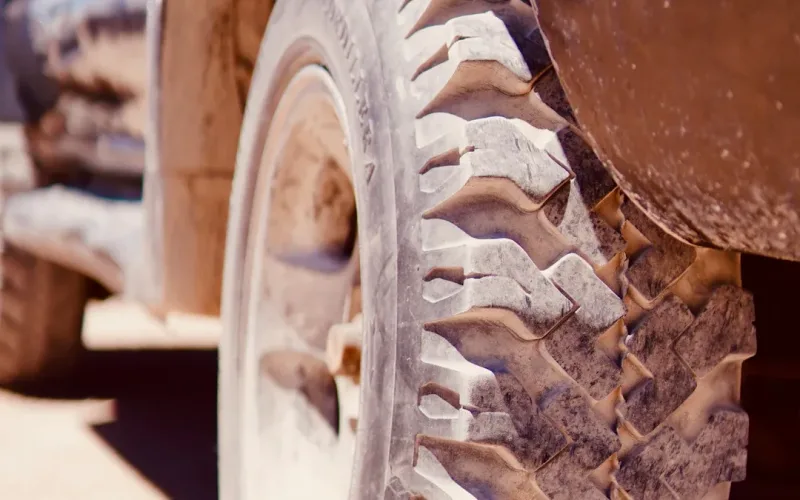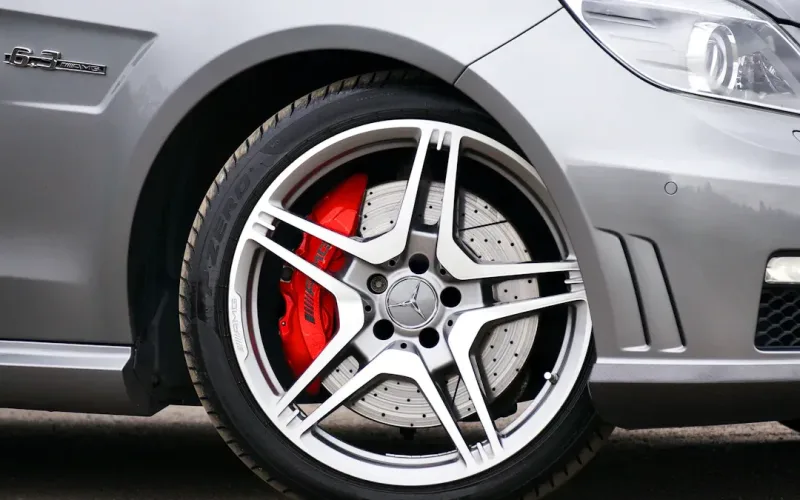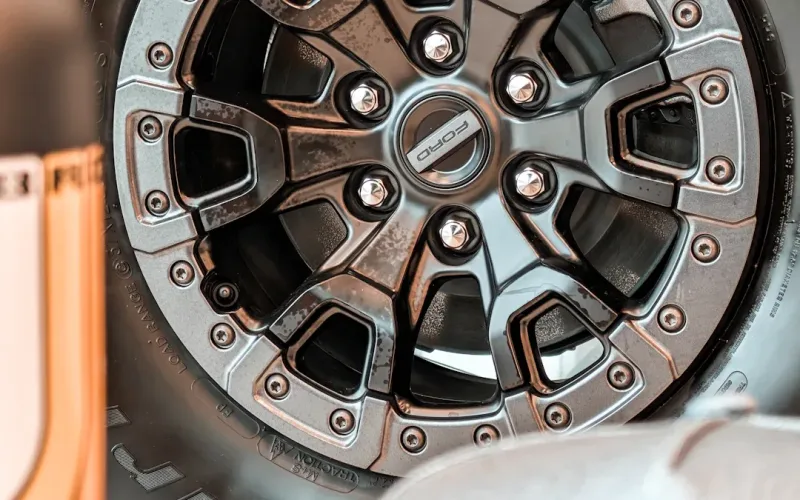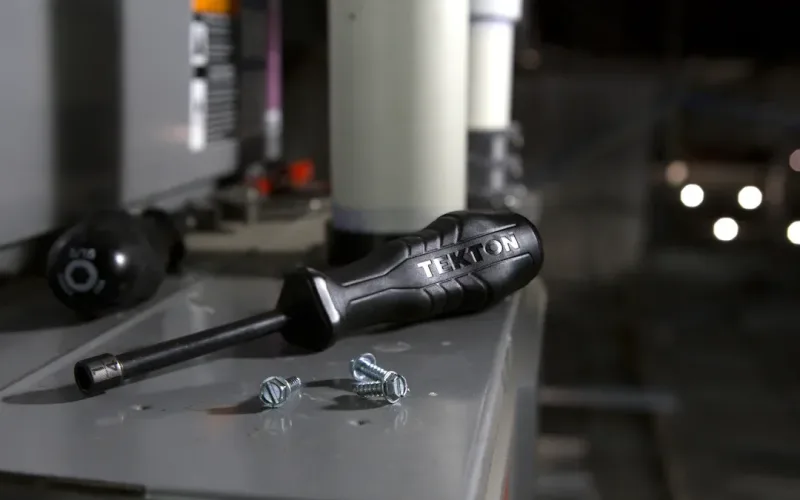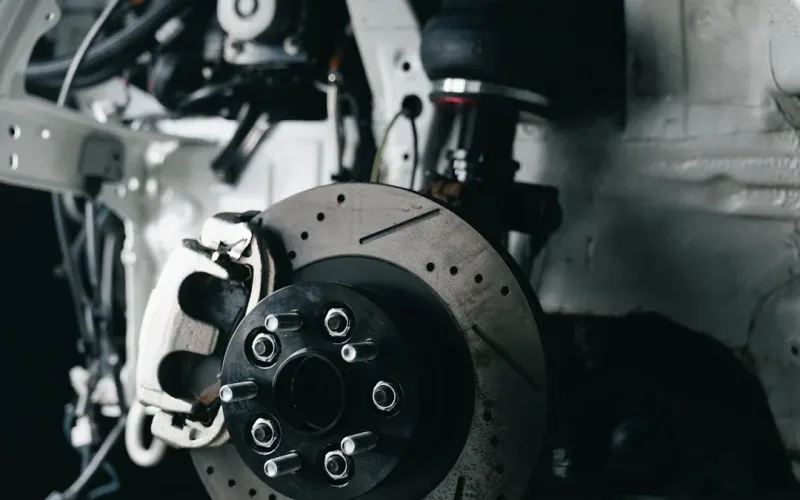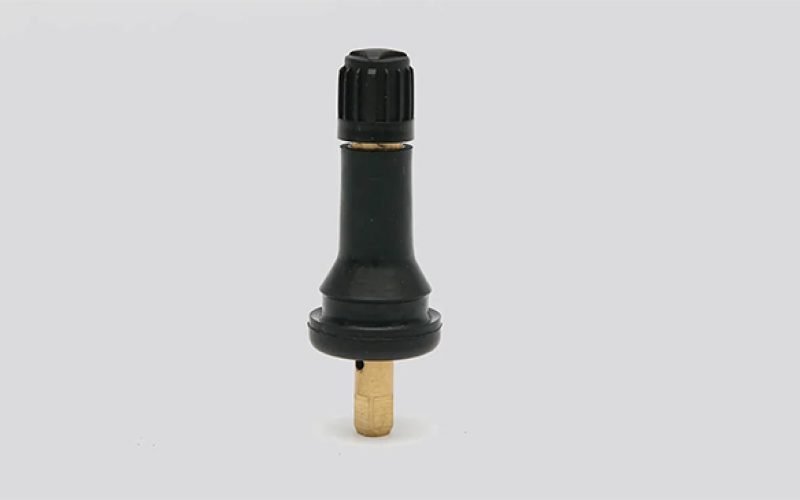

admin1
October 15, 2025
What Is a Lock Lug Nut Key and Why It Matters

Your lock lug nut key is a special socket with a unique pattern. It is designed to remove a specific locking wheel nut from each wheel on your vehicle. You absolutely need this locking wheel nut key to change a flat tire or perform other essential maintenance. The locking wheel nut provides a vital layer of security. This small key protects your investment from a growing and costly threat.
Wheel theft is a rising concern. In major metro areas, it has increased by over 30% in the past year alone. Replacing a set of four stolen wheels and tires costs victims an average of $2,800. The
locking wheel nutmakes it much harder for thieves to target yourvehicle, and thelocking wheel nut keyis the only way to remove it.
How Do Locking Lug Nuts Work?

Locking lug nuts provide security through a simple but effective design. They replace one standard lug nut on each wheel of your vehicle. This special locking wheel nut cannot be removed with a normal wrench. You need the matching locking wheel nut key to install or remove it.
The Unique Lock and Key System
Think of your locking wheel nut and key like a traditional lock and key. The locking wheel nut has a unique, computer-generated pattern engraved into its head. The locking wheel nut key is a socket that has the one and only matching pattern. Manufacturers create these patterns in several ways:
- They produce key patterns in small, exclusive batches.
- Patented systems allow for a nearly infinite number of unique designs.
- The keyed patterns are often located radially on the nut, making them hard to grip with standard tools.
This system ensures that only the person with the correct key can access the locking wheel nut. Without the specific locking wheel nut key, the wheel stays securely on your vehicle.
A Proven Deterrent Against Wheel Theft
Locking lug nuts are a proven theft deterrent. Most thieves carry common tools like lug wrenches. They do not carry the thousands of special keys required for every set of locking wheel nuts. Automotive experts agree that while a determined thief might eventually break a locking wheel nut, the process is very difficult and time-consuming. This extra effort makes your wheels a much less attractive target. The presence of a locking wheel nut is often enough to prevent an attempted theft. This simple device is a powerful tool against wheel theft.
Understanding the Locking Wheel Nut
A locking wheel nut looks different from the other nuts on your wheel. It is often cylindrical and may lack the hexagonal shape of a standard nut. Manufacturers build these locking lug nuts from incredibly strong materials. They use through-hardened steel or forged titanium alloys to resist drilling, hammering, and prying. This robust construction makes the locking wheel nut extremely durable. There are several common designs for locking lug nuts.
| Type of Locking Lug Nut | Description | Advantages/Characteristics |
|---|---|---|
| Keyed Head Locking Wheel Nuts | This is the most popular design. A specific socket (key) fits over the keyed head of the locking wheel nut. | Simple and widely available from many manufacturers. |
| Spinning Collar Locking Lug Nut | This locking wheel nut has a free-spinning security sleeve around the nut itself. | Very difficult to remove without the key; the sleeve prevents gripping. |
| Shear Head Bolt Locking Wheel Nuts | This type is designed to break off if any tool other than the matching key is used. | Makes theft very difficult; often found on newer European cars. |
These designs all work to stop theft and protect your investment. The keyed head locking wheel nuts are a very common and effective choice.
Where Is My Lock Lug Nut Key Located?
You know you have a locking wheel nut, but you cannot find the key. This is a common problem. Automakers and dealerships have several standard places to store the locking wheel nut key. Knowing where to look will save you time and frustration when you need it most. Your search should start inside your vehicle.
Common In-Car Storage Spots
Your locking wheel nut key is almost always stored somewhere within your vehicle. When a car is new, a dealer often installs one locking wheel nut on each wheel. They then place the original nuts and the special key in a designated spot. However, sometimes the key is not in the most obvious location. You may need to check a few places.
- The glove compartment or center console.
- The trunk, often with the spare tire and jack.
- A side compartment or storage pocket in the cargo area.
- The small pouch containing your vehicle’s owner’s manual.
Each locking wheel nut requires its matching key, so finding it is your top priority. A missing key for your locking wheel nut can stop a tire change completely.
Check the Glove Compartment or Console
The glove compartment is the most common home for your locking wheel nut key. Manufacturers know you need easy access to it. Look for a small, sealed plastic packet or a distinct bag.
Many suppliers provide a special ‘Locking Wheel Nut Bag’. This small pouch often has a drawstring or zipper. It securely holds the key for the locking wheel nut, preventing it from getting lost among other items. This bag is designed to hold your locking wheel nut key and any other small tools.
If you do not see a bag, carefully check all the contents of your glove compartment and center console. The key for each locking wheel nut is small and can easily get misplaced. Searching here first will likely solve your problem.
Look in the Trunk with the Spare Tire
If the key is not in the front of your car, your next stop is the trunk. Lift the floor panel where the spare tire, jack, and lug wrench are stored. The lock lug nut key is often placed in a specific cutout within the foam or plastic tool organizer. It should fit perfectly alongside the other tire-changing tools. This location keeps all the necessary equipment for removing a locking wheel nut in one place. The key for the locking wheel nut is essential for using the jack and wrench. Without the key, you cannot remove the locking wheel nut to change a flat.
Review Your Vehicle’s Paperwork
If your search inside the car comes up empty, your vehicle’s paperwork is the next place to check. You should carefully inspect the documents that came with your car when you bought it. This paperwork often contains the vital information needed to replace a lost locking wheel nut key. Start with the black portfolio that holds your owner’s manual and other important booklets.
Inside this packet, you are looking for a small card or a sticker. This is the Identification Code Card for your locking wheel nut set. Manufacturers include this card specifically for situations where the key is lost. The code is a unique alphanumeric sequence that corresponds directly to the pattern on your locking wheel nut. Each locking wheel nut has a computer-generated design, and this code is the only way for a manufacturer to look up that specific pattern.
Pro Tip: 📝 The ID code is your direct link to a replacement key. Keep this card in a safe place separate from the key itself, such as with your vehicle title or insurance documents at home.
This code allows you to order a new key directly from the manufacturer or a dealership. Without it, removing the locking wheel nut becomes a much more complicated and expensive task. The code proves you are the owner of the locking wheel nut. It ensures you receive the correct tool. The unique pattern on each locking wheel nut makes this code essential. This system protects the security of every locking wheel nut. Remember, the code is tied to your specific locking wheel nut, not just the make and model of your car. Finding this code is the most important step toward getting a new locking wheel nut key and regaining access to your wheels.
What to Do If You Lose Your Locking Wheel Nut Key
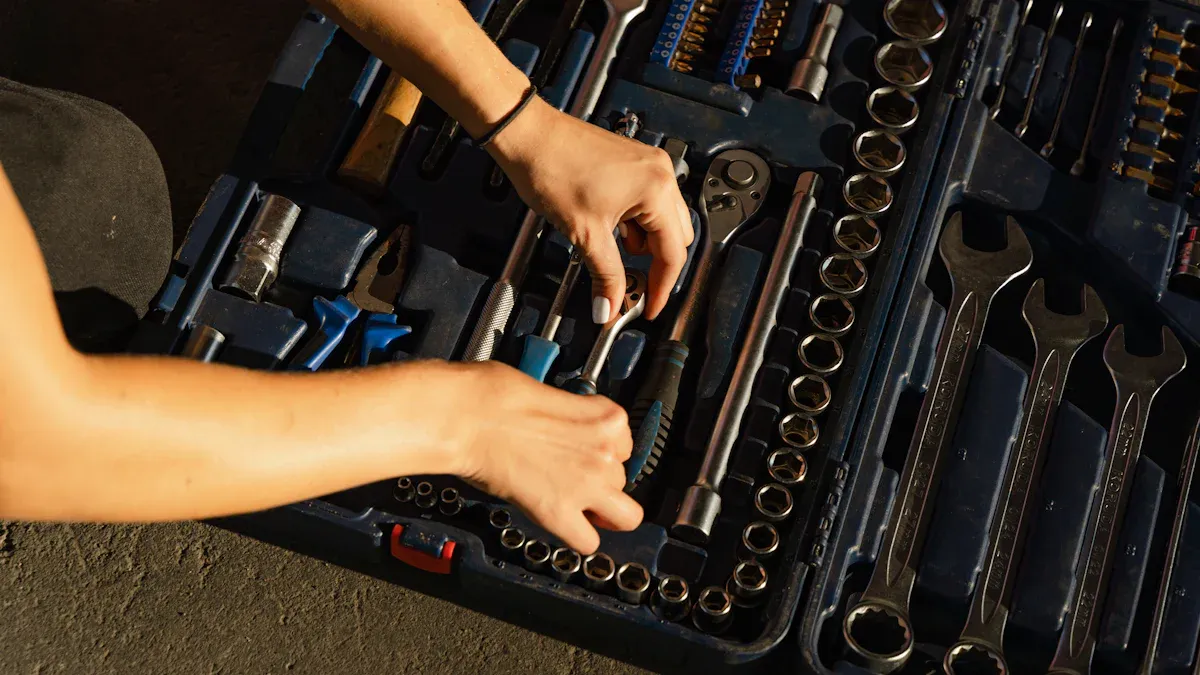
Losing your locking wheel nut key can be stressful, especially if you have a flat tire. You cannot remove the wheel without it. Fortunately, you have several options to solve this problem. Acting quickly will get you back on the road and ensure your wheels remain secure. The first step is the most important one.
Step 1: Find Your Key’s Identification Code
Your first task is to find the identification code for your specific locking wheel nut set. This code is the direct link to getting a replacement locking wheel nut key. You should have found this code when you reviewed your vehicle’s paperwork. It is usually on a small card or sticker. This code is essential because it matches the unique pattern of your locking wheel nut.
💡 Important: The manufacturer does not use your vehicle’s VIN to identify your locking wheel nut. The code is tied only to the locking wheel nut set itself.
To order a replacement key, you will need specific information. General details are not enough.
- You need the ‘wheel lock key registration number’. This number is often on a silver sticker that came with the original locking wheel nut package.
- You cannot use the part number of the locking wheel nut set (e.g., 71631N).
- You also cannot use the thread size stamping (e.g., M14x1.5) to order a new key.
This registration number ensures you receive a key that perfectly matches your locking wheel nut. Without it, you must move on to other, more difficult solutions.
Step 2: Order a Replacement Key
Once you have the identification code, you can order a replacement locking wheel nut key. You can usually do this directly from the manufacturer’s website or by calling their customer service department. This is the most straightforward and cost-effective solution. You provide the code, place your order, and wait for the new key to arrive.
The delivery time for your replacement key can vary. For example, a major manufacturer like McGard uses First Class Mail for standard shipping. This method typically takes seven to ten business days for delivery. If you are in a hurry, most companies offer faster shipping. You can often choose overnight, second-day, or third-day delivery for an additional fee. This gets the new key to you much faster. Ordering a replacement is the best option if you are not in an emergency.
Step 3: Visit a Dealership or Tire Shop
You may not have the identification code. You might also have a flat tire and need to remove the locking wheel nut immediately. In these cases, your best option is to visit a professional. A car dealership or a reputable tire shop has special tools to remove a locking wheel nut without the original key.
This service comes at a cost. The price for removing a set of four locking lug nuts can vary significantly depending on the shop.
| Service Provider | Average Cost for Four Nuts |
|---|---|
| Tire Shop 1 | $85 |
| Tire Shop 2 | $20 |
| Discount Tire | $40 |
| Dealer | $20 |
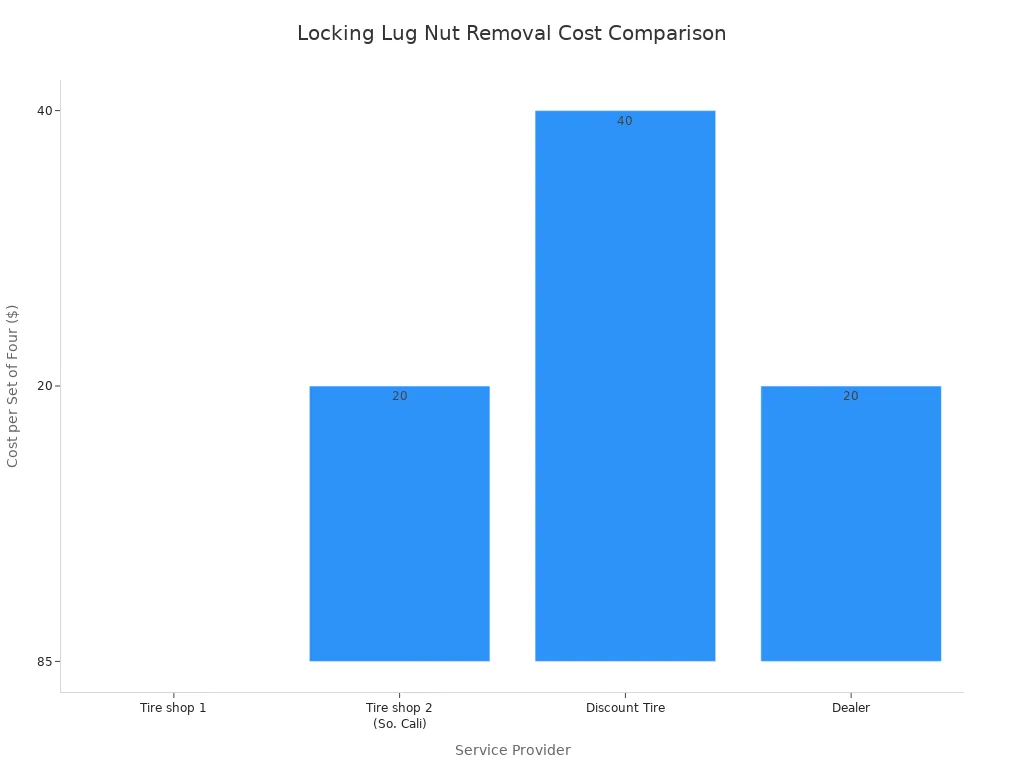
While professional removal is effective, it has risks. The process involves force. Technicians may need to drill out the locking wheel nut. This forceful removal can sometimes damage your expensive wheel or the wheel hub. Professionals are trained to minimize this risk, but it can happen. After they remove the old locking wheel nut, you will need to buy a new locking wheel nut set to keep your wheels protected.
Are Locking Wheel Nuts Necessary for Your Vehicle?
You might wonder if locking wheel nuts are truly essential for your car. The answer depends on how much you value your wheels and your peace of mind. For most drivers, these simple devices offer a powerful return on a small investment. They provide a critical defense against the high cost and frustration of wheel theft.
Protecting Your Investment in Wheels and Tires
Your wheels and tires are a valuable part of your vehicle. Upgrading a new car with a set of four alloy wheels can easily cost you $1,000 or more. This makes them an attractive target for thieves. A locking wheel nut protects this significant investment. You might think thieves only want flashy, custom rims, but that is not the case.
“As we look at the claims we handle, these are not fancy custom wheels being stolen. Nearly 90 percent of the insurance claims we handle are for OEM wheels.” – Chris Sestito, COO at Premiere Services
This fact shows that nearly any vehicle with factory alloy wheels is a potential target. A single locking wheel nut on each wheel makes your car much harder to victimize.
Adding a Crucial Layer of Security
Locking lug nuts are a fundamental component of vehicle security. They work by replacing one standard nut on each wheel with a special locking wheel nut that requires a unique key. Thieves often target common cars because their parts are easy to sell. Some of the most targeted models include:
- Honda Accord
- Honda Civic
- Chevrolet 1500 P/U Tahoe Suburban
- Toyota Camry
- Ford F Series
The difference between a standard nut and a locking wheel nut is simple but effective.
| Feature | Standard Lug Nuts | Locking Wheel Nuts |
|---|---|---|
| Design | Simple, uniform shape | Unique pattern with grooves or ridges |
| Removal Tool | Standard lug wrench | Needs a specific locking wheel nut key |
| Security | Basic security | Extra security against theft |
| Cost | Low-cost | Slightly more expensive ($20–$100) |
This extra layer of security makes a huge difference. A thief with a standard wrench cannot remove your wheels, which often encourages them to move on to an easier target.
Peace of Mind for a Minimal Cost
The cost of locking lug nuts is very low compared to the cost of replacing stolen wheels. You can find a reliable set of locking wheel nuts for a reasonable price, giving you valuable protection without a large expense. The price often reflects the complexity and security of the design.
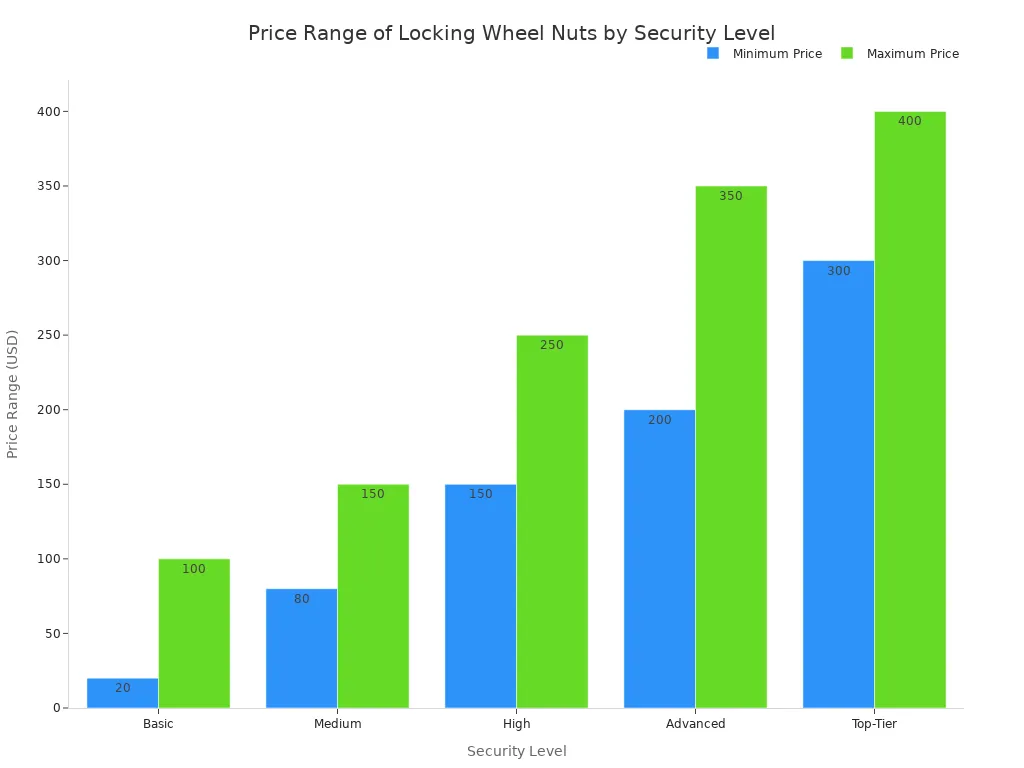
Even a basic set of locking lug nuts provides a strong deterrent. For a small one-time cost, you get lasting peace of mind. Remember to always keep your locking wheel nut key in a safe place. While locking lug nuts are a great start, you can also combine them with other strategies for even better protection.
| Security Device/Strategy | Description/Purpose |
|---|---|
| Wheel Locks/Boot Clamps | Immobilize one or more wheels, making the vehicle an unattractive target. |
| Smart Alarm Systems | Offer extra protection with features like motion sensors. |
| Safe Parking Locations | Prioritize bright lighting, high visibility, and high foot traffic. |
Ultimately, a locking wheel nut is a necessary and affordable tool to protect your property.
Your lock lug nut key is a small but critical tool. You need this locking wheel nut key for both vehicle security and essential maintenance. Always know where you store this important key.
A lost locking wheel nut key can leave you stranded during a tire emergency. If your key is missing, take immediate steps to get a replacement. A new lock lug nut key protects your investment. This ensures your locking wheel nut key is ready for any roadside repair.
FAQ
Can I use one key for different cars?
No, you cannot use one key for different vehicles. Each locking nut set has a unique, computer-generated pattern. Your specific key only matches the nuts that came in its set. This design ensures high security for your wheels.
Are all locking lug nuts the same?
Locking lug nuts come in several designs. The most common type uses a keyed head. Other designs include spinning collars or shear heads for extra security. You should choose a style that fits your vehicle and security needs.
What happens if I break my locking lug nut key?
You follow the same steps as losing it. Use the ID code from your original paperwork to order a new key from the manufacturer. Without the code, you must visit a professional shop to have the locking nut removed.
Do thieves have master keys for these locks?
No, master keys for locking lug nuts do not exist. Manufacturers like McGard produce thousands of different key patterns. This complexity makes it nearly impossible for a thief to carry a key that would match your specific locks.
